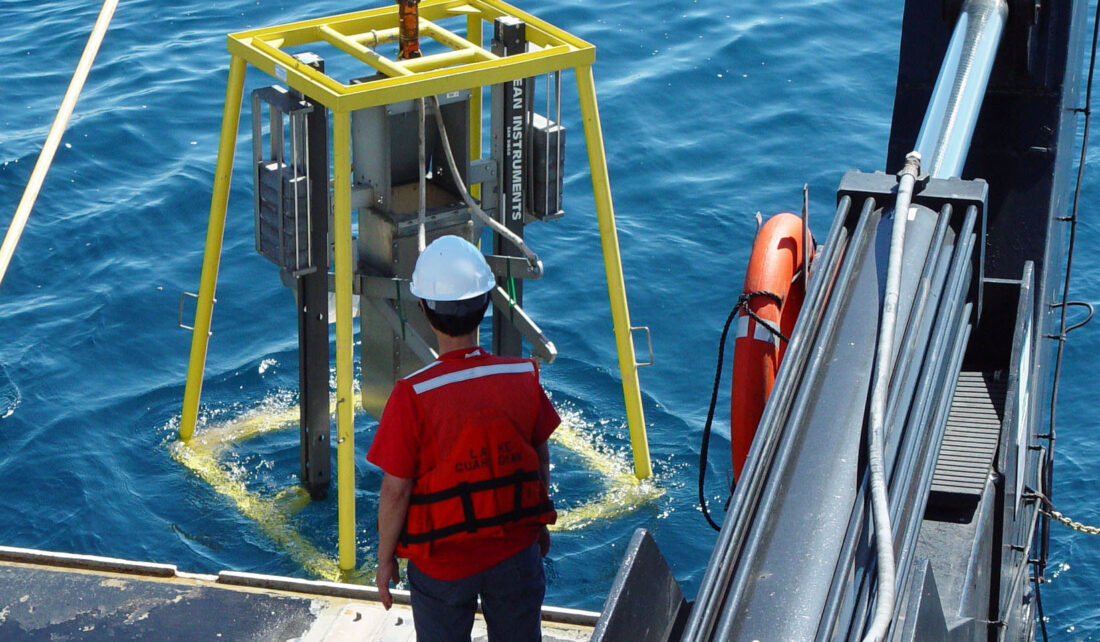
Every five years, Lake Michigan is the focus of intense research and monitoring when scientists come together to answer critical questions and fill information gaps. A report summarizing the results of the most recent data collection on the lake is now available.
Each year since 2002, through the Cooperative Science Monitoring Initiative (CSMI), multiple federal, state, and university scientists gather on one of the Great Lakes to take part in coordinated research. CSMI is a binational program organized through the U.S. Environmental Protection Agency Great Lakes National Program Office and Environment and Climate Change Canada.
Lake Michigan was slated for 2020 to be its CSMI field year, but due to the pandemic, the sampling actually took place in both 2020 and 2021. Research priorities included learning more about the lake’s changing food web dynamics, the impacts of contaminants and bacteria, and the connections between watersheds and tributaries to the lake’s water quality.
Quagga mussels featured prominently in the key findings of the compiled 2020 research results—they are the dominant invertebrate species in the lake. The good news is that the quagga mussels’ population density has somewhat stabilized, on the other hand, their numbers in deeper areas of the lake continue to slowly expand.
“Quagga mussels continue to play a key role in nutrient and primary production dynamics in Lake Michigan,” said Paris Collingsworth, Illinois-Indiana Sea Grant (IISG) Great Lakes ecosystem specialist and Purdue University researcher. “Quantifying the effects of these mussels on the energy flow throughout the lake is an important concern for the management community of Lake Michigan.”
Collingsworth provides leadership in collaboration with EPA scientists, defining critical questions and coordinating research efforts of various agencies for large-scale studies. He works with the lake partnerships for each lake as they define CSMI research priorities, and with scientists as they set up studies and analyze data.
The significant presence of quagga and zebra mussels, or dreissinids, in Lake Michigan and their consumption of so much of the energy of the lower food web have left lake waters clear. CSMI research showed that this extreme clarity has shifted the vertical distribution of planktonic organisms lower in the water column to avoid high ultraviolet radiation in surface waters.
Mortality from ultraviolet exposure may also be a bottleneck for fish larvae survival and potential recruitment in Lake Michigan, but some species may fare better than others.
For example, higher pigmentation on bloater larvae compared to those of alewife suggests that bloater can endure ultraviolet exposure. In fact, findings reveal that while alewife larvae catches in 2021 were 3.7 lower than in 2015, bloater densities were 2.2 times higher in 2021.
Researchers found that quagga mussels are having an impact on fish populations in other ways. When the quagga mussel veliger, a larval stage, is part of the larval fish diet, this reduces fish growth and survival rates.
“The long-term tracking of invasive mussels and other lower food web organisms by CSMI partners has been extremely helpful to all lake managers because it improves our understanding of lake ecosystem processes, informs management decisions and provides sound scientific information on a changing ecosystem that can be shared with Great Lakes anglers and stakeholders,” said Vic Santucci, Lake Michigan fisheries program manager with the Illinois Department of Natural Resources.
The scientists also studied contaminants in Lake Michigan and found evidence that spottail shiner may be exposed to a sediment source of PFAS (or per- and polyfluoroalkyl substances). These compounds are called “forever chemicals” because they don’t break down in the environment.
To learn more about these results and many others, the Cooperative Science and Monitoring Initiative Lake Michigan 2020 Report with key findings and an executive summary is on the IISG website.

